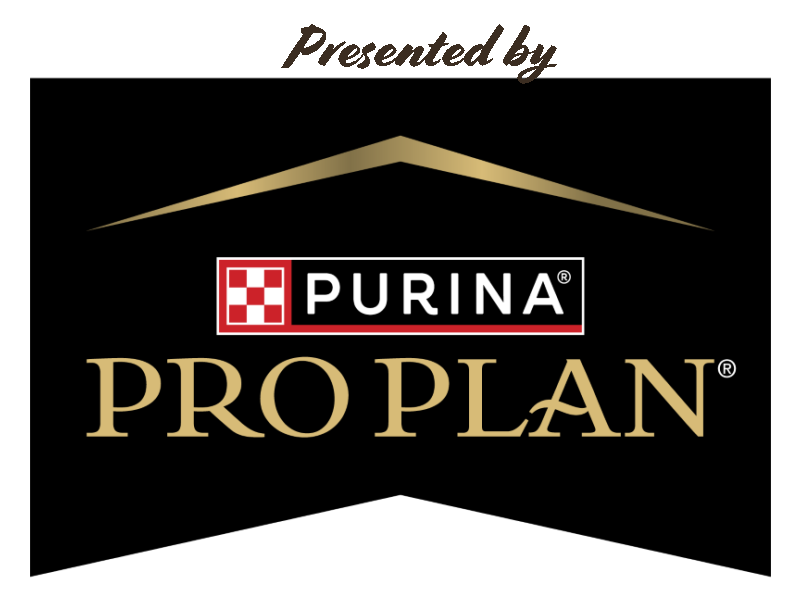The Competition Course
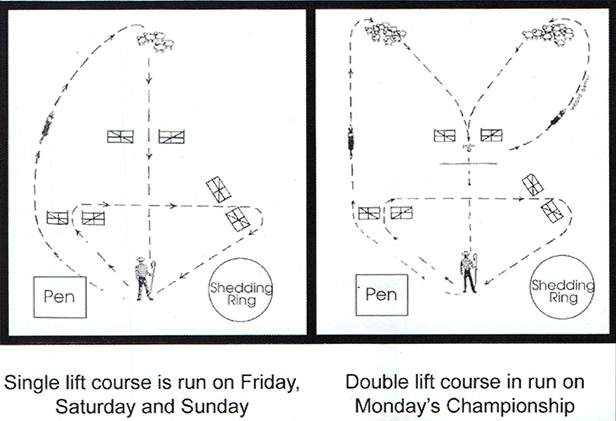
While shepherding is “among the oldest occupations, beginning some 5,000 years ago,” best evidence suggests that organized sheepdog trials date back to 1867, with reports of trials in New Zealand. The success of early trials in England and Scotland spread to the United States in the 1880s and today the tradition continues under the aegis of organizations such as the International Sheepdog Society (ISDS) in Great Britain and the United States Border Collie Handlers Association (USBCHA) in the United States. This trial – the Soldier Hollow Sheepdog Classic – is an invitational trial, but complies with the USBCHA course standards and is judged according to the USBCHA Judging Guidelines.
The sport of trialing evolved from the agricultural roots much as the sport of rodeo in America. The purpose of a sheep dog trial is to test and demonstrate the dog and handler’s ability to move sheep over a prescribed course made up of practical obstacles found in everyday work and to maneuver sheep in a calm, controlled manner. There are generally six scored elements to a course run (discussed below), each designed to test a skill that working dogs need to help a shepherd with the daily management of sheep. While the layout of the course may vary slightly from trial to trial, depending on terrain, all approved trials include the elements discussed below. Each handler-dog team begins with a total score of 100 (can be more if more elements) and the judge takes off points for the mistakes made in each element of the course.

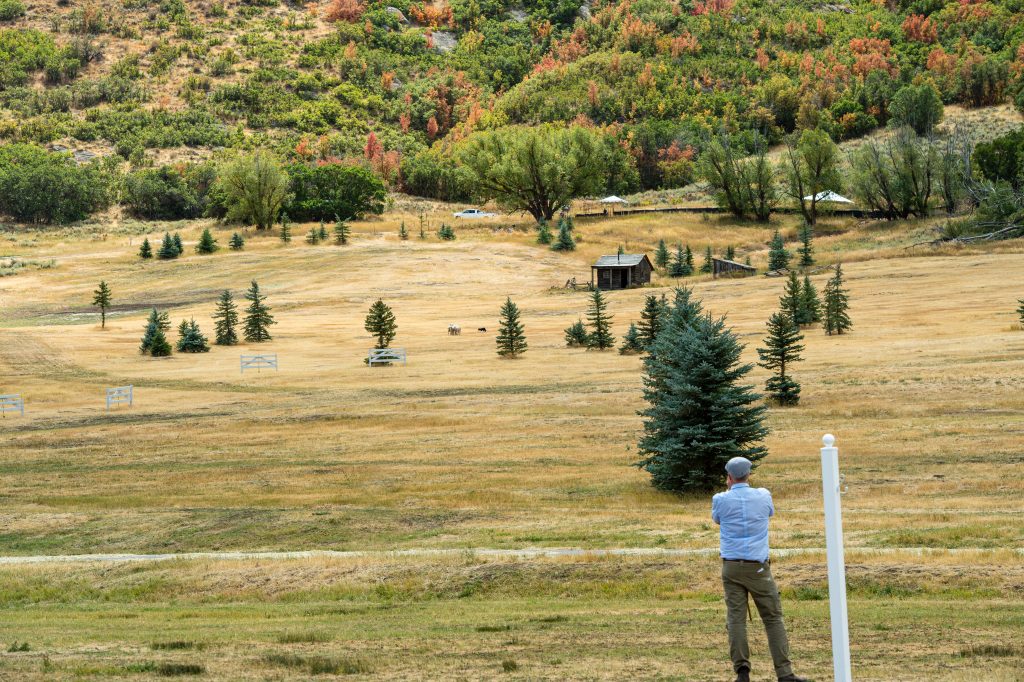
OUTRUN (20 points): The dog and handler start at the handler’s post where the dog must stay until the sheep are “set” at the far end of the field. The handler may send the dog either to the left or right, and the dog’s outrun should be neither too straight nor too wide, and sufficient distance from the sheep not to disturb them.
Here at Soldier Hollow, the dog is sent from the post that you see near the bottom of the picture above, come up the top of the hill (usually running on the right side of the field from this view, but on the left from the handler’s perspective and that of the spectators.)
Points are lost if the dog crosses the course, stops, or if commands are given during the outrun. This is the only element of the course that commands are penalized as it is testing the dog’s natural ability to run out and find the sheep. The first three elements — the outrun, lift and fetch — are called “the Gather.”
LIFT (10 points): The lift begins with the dog takes control of the sheep and causes them to move. Whether the dog has stopped or slowed down, the approach should be smooth and steady and the dog should take control of the sheep in a quiet, firm manner and should not cause the sheep to scatter.
FETCH (20 points): Once the sheep are on the move (lifted), they should be brought at a steady pace through the gates to the handler. Points are deducted it the sheep miss a panel or don’t move in a straight line.
The fetch ends when the sheep have passed around and behind the handler, at which point the drive begins. Rushing, slowness, too many commands, and other faults may also be penalized as the judge sees fit under the guidelines.
Any ties at the end of a trial are usually determined based on which of the dogs had the best gather score (total points earned on outrun, lift and fetch).
DRIVE (30 points): The drive begins after the sheep pass behind the handler’s post and begin to move towards the first set of drive panels. The drive here adopts the typical triangular pattern and, here is run right to left.
The stock are required to go in a straight line to the first set of gates. The “line” is roughly the width between the panels, which is 21 feet. Having either made or missed the first gate, the stock are to turn on to a direct line across the course to the second set of gates. When these gates are either made or missed, the dog is to bring the sheep in a straight line to the shedding ring. Once a gate is missed, the handler may not retry the gate, and doing so is a further deduction.
Any deviation from the line, missing gates, rashness, circling stock or other faults will be penalized.
SHED (10 points): Shedding is done inside a 120-foot diameter ring, clearly marked and in front of the handler. Once the first sheep has entered the ring, the handler goes into the ring to assist the dog.
The handler/dog team is generally asked to separate two sheep from the group of four or five sheep. Ideally, the dog comes through the sheep towards the handler, separating the last two sheep and holding them away from the rest. The dog must be in control of these two sheep or it will not be considered complete.
The Judge “calls” the shed when complete, at which time the handler may go to the pen. This completes a 100-point course.
Some trials also include a “single” after the pen, which is like the shed, other than only one sheep is separated from the group and the dog must show that it is in control of the single sheep.
A single is also substituted for the shed if only a group of three sheep is being used on the course. If there are both elements, a shed and a single, the total possible score is 110 points.
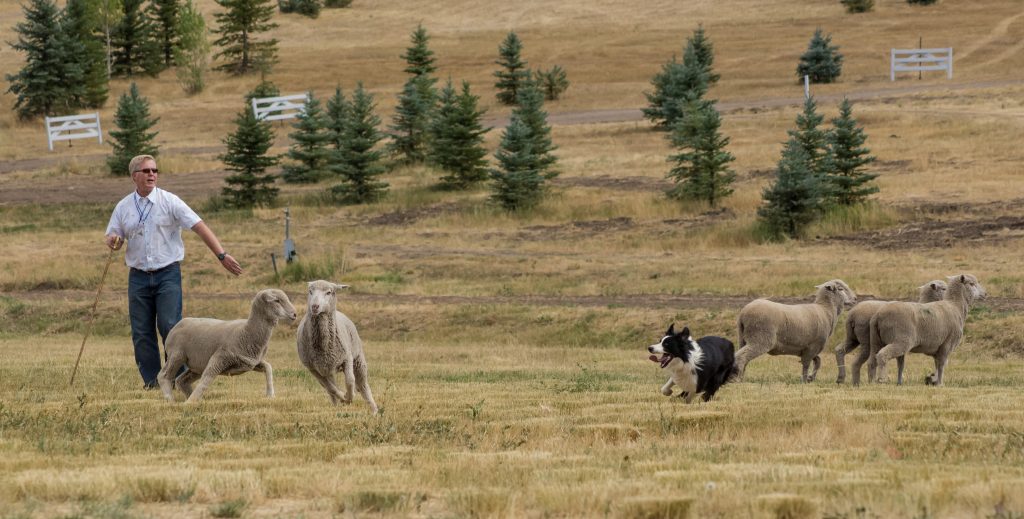

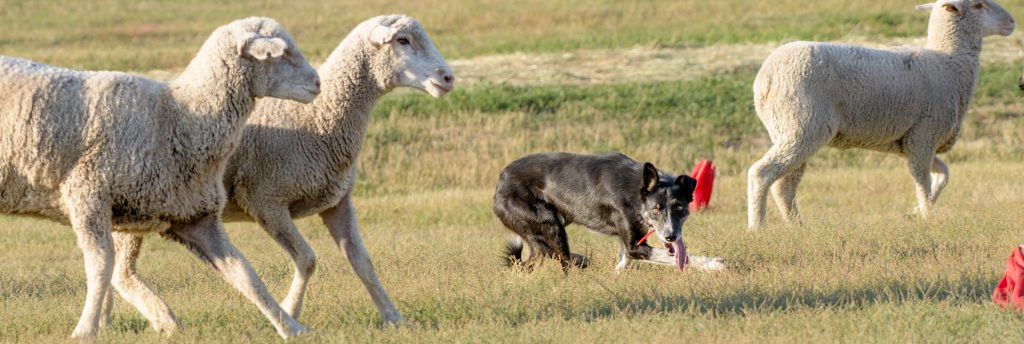
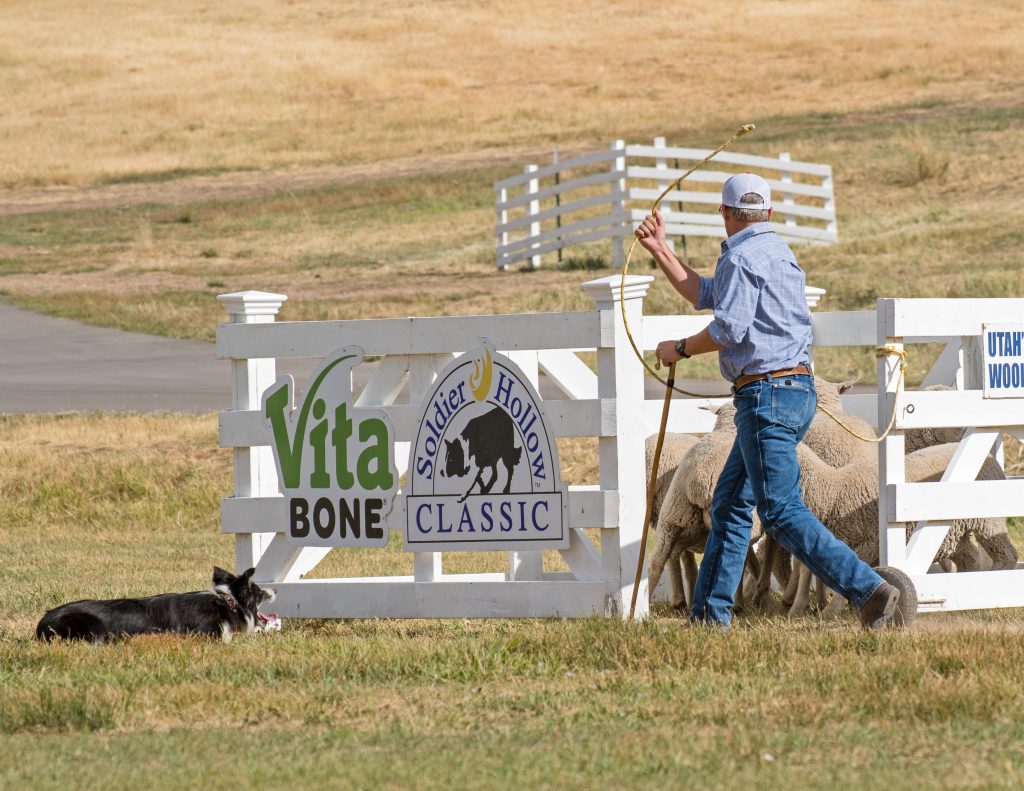

PEN (10 points): On completion of the shed, the handler proceeds to the pen, leaving the dog to reunite the sheep and bring them to the pen. Once the handler takes hold of the gate rope (generally 6 feet long), the handler cannot let go of the rope until the sheep are in the pen and the gate is closed. The handler may assist the dog, but over assistance should be penalized, as should stock circling the pen or making breaks away from the pen, or any other fault shown by the dog.
This completes the 100 point course.
DOUBLE LIFT AND INTERNATIONAL SHED: Sheepdog trials and courses vary in difficulty. The most difficult course is referred to as the double lift and international shed. It is this course that is run here at Soldier Hollow for the Championship on Monday. The dog has two separate outruns to find and gather the sheep in two different locations. Each outrun here is about 400 yards or more.
After completion of the double gather and the drive, the “international shed” requires the handler-dog team to separate and pen five marked (collared) sheep from among the total 16-20 sheep gathered.
This difficult course is what is used in the sheepdog final (the last day) of the USBCHA National Finals in which the 17 finalists compete. It is also used in the finals of the World Trial and International Trial, along with other trials in the United States and abroad.



